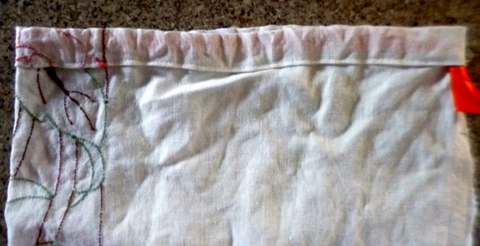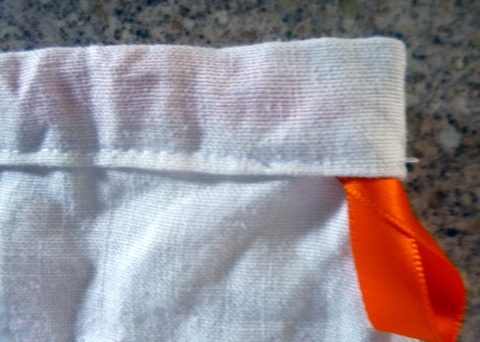One of the things that has come out of my daughters' 30 day Zero Waste challenge was the issue of plastic bread bags. How do you get away without them, but keep your bread fresh? Well, it seems, for a sheaf of years those connoisseurs of fine food, the French have been using linen bags. Linen, of course, being a fabric made from flax (not cotton) and it appears it helps to keep the bread fresh while lessening the risk of it going mouldy (like it tends to do when stored in plastic).
Other benefits of using linen bread bags include –
• Keeps the bread in the dark. Light is bad for bread but great for fungi and mould.
• The bag is washable – linen bread bags are re-usable, so waste is reduced and you can just throw them through with the wash to keep them clean.
• The bag keeps bread from drying out, keeping it fresher for longer.
• Linen naturally attracts moisture (so they tell me)
• When you are out doing your weekly (or whatever) shop you can carry the bread in the bag by its drawstring, so it doesn’t get crushed the other stuff you have.
The idea is that you buy uncut bread from a baker (or make it yourself) and store it in the linen bread bag, and voila, no plastic! But where does one find such an animal? The answer is you make it!
As with the initial item in a recipe for tiger stew (ie first catch your tiger!) some true linen needs to be sourced. You can still buy linen fabric from fabric shops occasionally but it is Expensive (note the capital “E”), but the best place to obtain such material is to get hold of second hand linen tea towels or table cloths from places such as the Salvation Army or St Vinnies etc.
My daughter bought a pure linen table cloth from the Salvation Army and proceeded to cut it up for bread bags, and we were the recipient of one such bag.
To make a bread bag
1. Cut a square out of your table cloth 55cm x 55cm. If using a tea towel, jut cut the long side to 55cm or leave it whole to make a baguette bag (how French can you get?).
2. Fold the fabric over with the top surface of the table cloth or tea towel on the inside.
3. Sew the long side and one short side, to form the bag. If you have an overlocker this would be ideal. If not put in a running stitch about 1 cm from the edge of the fabric and then between the running stitch and outer edge of the fabric put in a zig zag stitch, this will prevent fraying. I have also been reliably informed that some sewing machines can put both sets of stitching in together.
4. Fold the open end over about a centimetre once and place some ribbon or other material to act as a drawstring inboard of the fold. Fold the open end over the top of the ribbon and sew a running stitch along the edge to secure the drawstring.
5. Turn the bag inside out and you are ready to go!
We have been using ours for our homemade bread but it is just as easy to take to your local baker and get them to put the bread directly in the bag, avoiding the need for any plastic.






